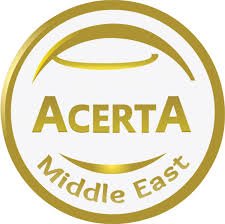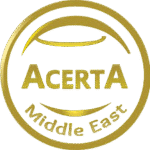
In high-hazard industries like oil and gas, petrochemicals, and manufacturing, constructing complex facilities such as refineries, offshore platforms, or chemical plants demands meticulous planning to ensure safety, efficiency, and cost-effectiveness. Constructability Reviews are a critical process that evaluates a project’s design to ensure it can be built safely, on time, and within budget while meeting operational and regulatory requirements. By identifying potential construction challenges early, these reviews enhance project outcomes and minimize risks. This article explores the principles, methodology, and practical applications of Constructability Reviews, with insights into how Cormat Group implements this approach to deliver successful projects.
A Constructability Review is a systematic evaluation of a project’s design to assess its feasibility, safety, and efficiency during construction. It involves analyzing design documents, such as drawings and specifications, to identify potential issues that could affect construction, such as accessibility, safety hazards, or logistical constraints. The review brings together multidisciplinary teams to ensure the design is practical, cost-effective, and aligned with safety and operational goals.
In high-hazard industries, Constructability Reviews are particularly important due to the complexity of facilities and the need to comply with regulations like the UK’s Control of Major Accident Hazards (COMAH) or OSHA’s Construction Safety Standards. For example, in an offshore platform project, a Constructability Review might identify that a proposed equipment layout restricts crane access, prompting design changes to improve safety and efficiency. The goal is to reduce risks to As Low As Reasonably Practicable (ALARP), ensuring a safe and successful construction phase.
Constructability Reviews are essential for delivering successful projects in high-hazard industries. Their key benefits include:
A 2023 report by the Construction Industry Institute found that projects with comprehensive Constructability Reviews reduced construction costs by up to 15% and improved safety performance by 30%, highlighting their value in complex projects.
Constructability Reviews are built on several core elements that ensure a comprehensive evaluation of project design:
Analyze design documents, such as drawings, specifications, and 3D models, to assess their feasibility for construction, focusing on safety, accessibility, and practicality.
Identify construction-related hazards, such as confined spaces, heavy lifts, or high-hazard material handling, that could pose risks to workers or the environment.
Evaluate the design’s buildability, considering factors like site access, equipment availability, construction sequencing, and worker safety.
Recommend design changes or construction strategies to address identified issues, such as modifying layouts or adding temporary supports.
Engage multidisciplinary teams, including engineers, contractors, and safety professionals, to ensure diverse perspectives and practical solutions.
Create detailed review reports, including identified issues, recommendations, and action plans, to guide design revisions and construction planning.
Demonstrate that construction risks are reduced to ALARP by balancing the cost of additional measures against safety and efficiency benefits.
Technology enhances the efficiency and accuracy of Constructability Reviews:
Cormat Group leverages these technologies to streamline their Constructability Reviews, ensuring safe and efficient project execution.
Constructability Reviews are a vital tool for ensuring safe, efficient, and cost-effective construction in high-hazard industries. By identifying design flaws, optimizing workflows, and mitigating risks, these reviews enhance project outcomes and compliance. Cormat Group demonstrates how a rigorous Constructability Review process drives project success, protecting workers and assets. Despite challenges like complexity and stakeholder alignment, technology, collaboration, and regular updates can overcome them. As industries evolve, Constructability Reviews will remain essential for delivering safer, more efficient projects.
Please get in touch with our specialist.
Sultan International Tower
P.O. Box 41233,
Abu Dhabi, U.A.E.
Landline: +971 2 622 3535 Ext: 303
Cormat-Al Bunyan Vision Contracting
131 street, Al Muruj, Abha, KSA

Building 2,
Guildford Business
Park Road, Guildford.
Surrey. UK. GU2 8XG.
Sultan International Tower
P.O. Box 41233,
Abu Dhabi, U.A.E.
Landline: +971 2 622 3535 Ext: 303
Cormat-Al Bunyan Vision Contracting
131 street, Al Muruj, Abha, KSA

Copyright 2025 Cormat Group | All Rights Reserved | Certified